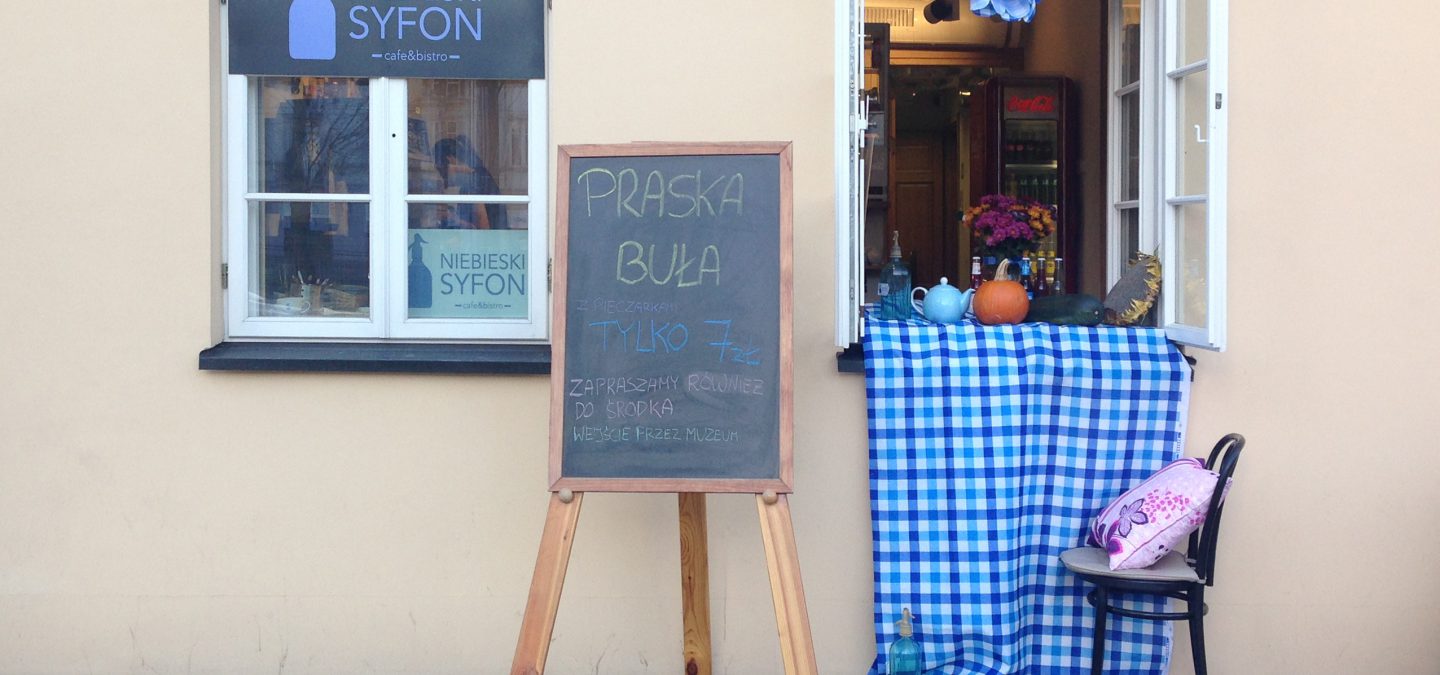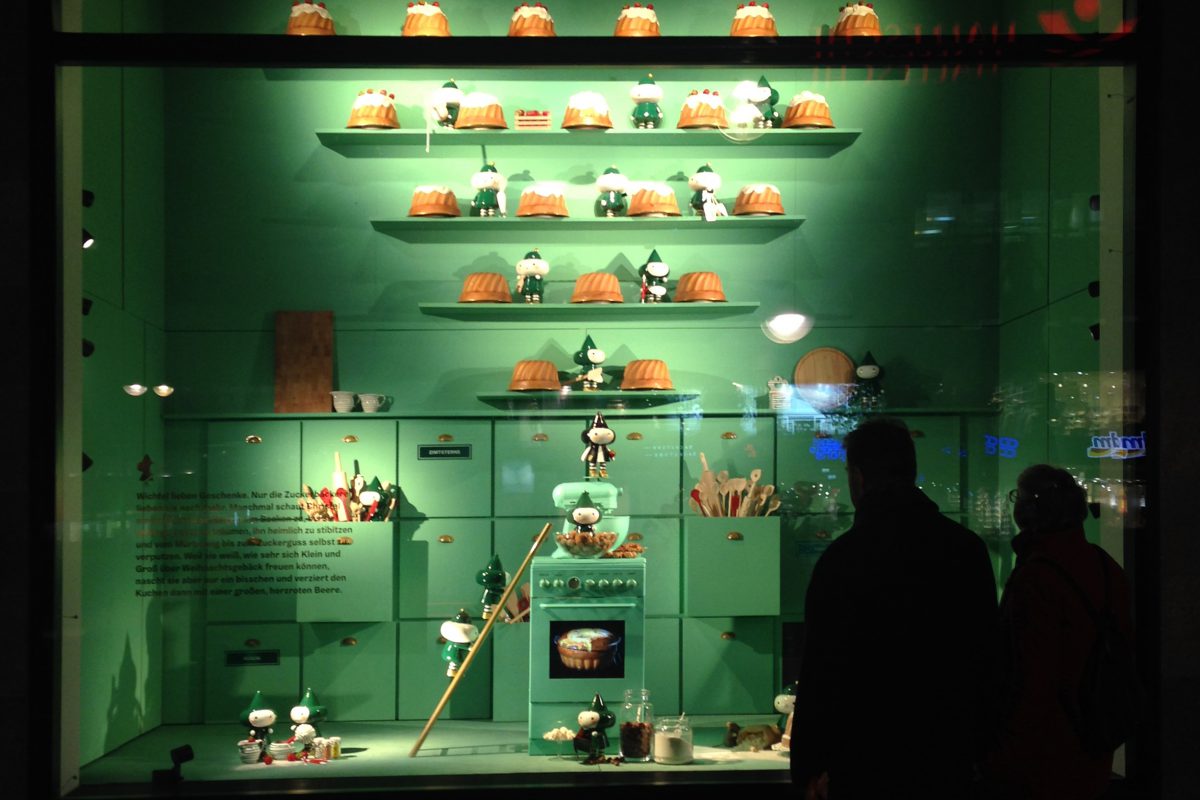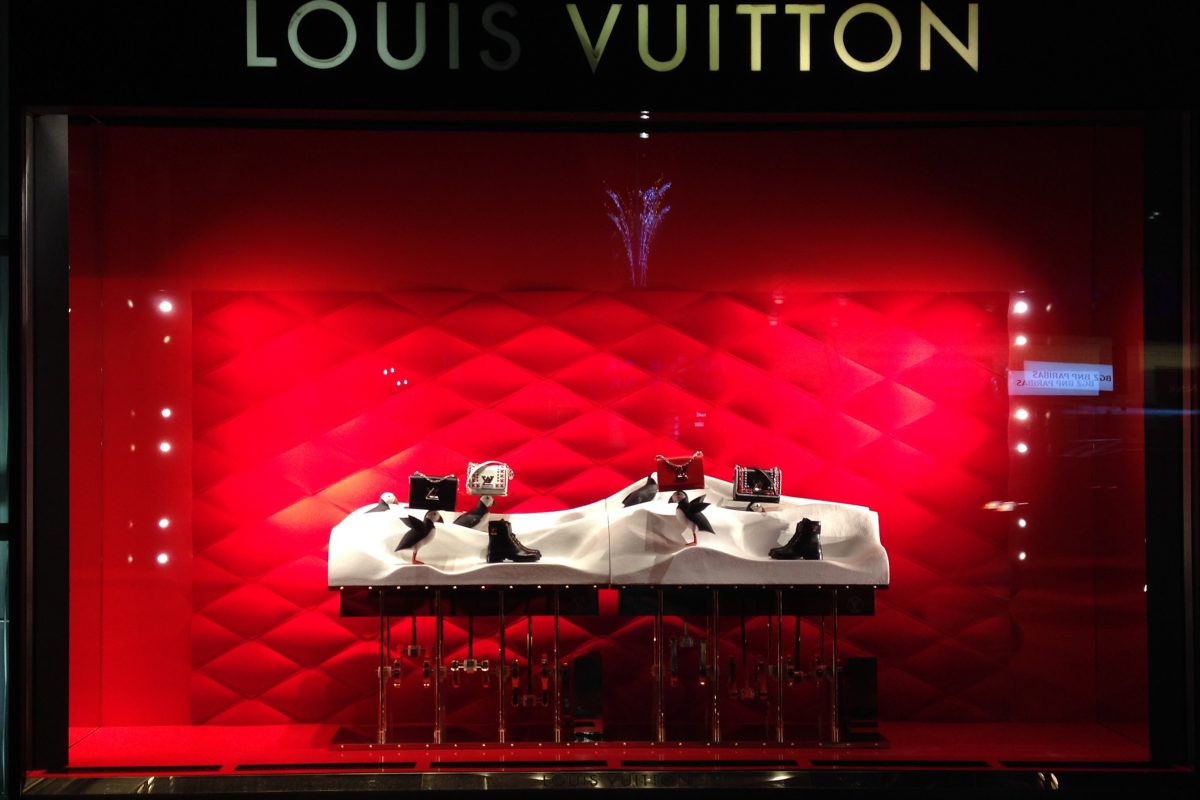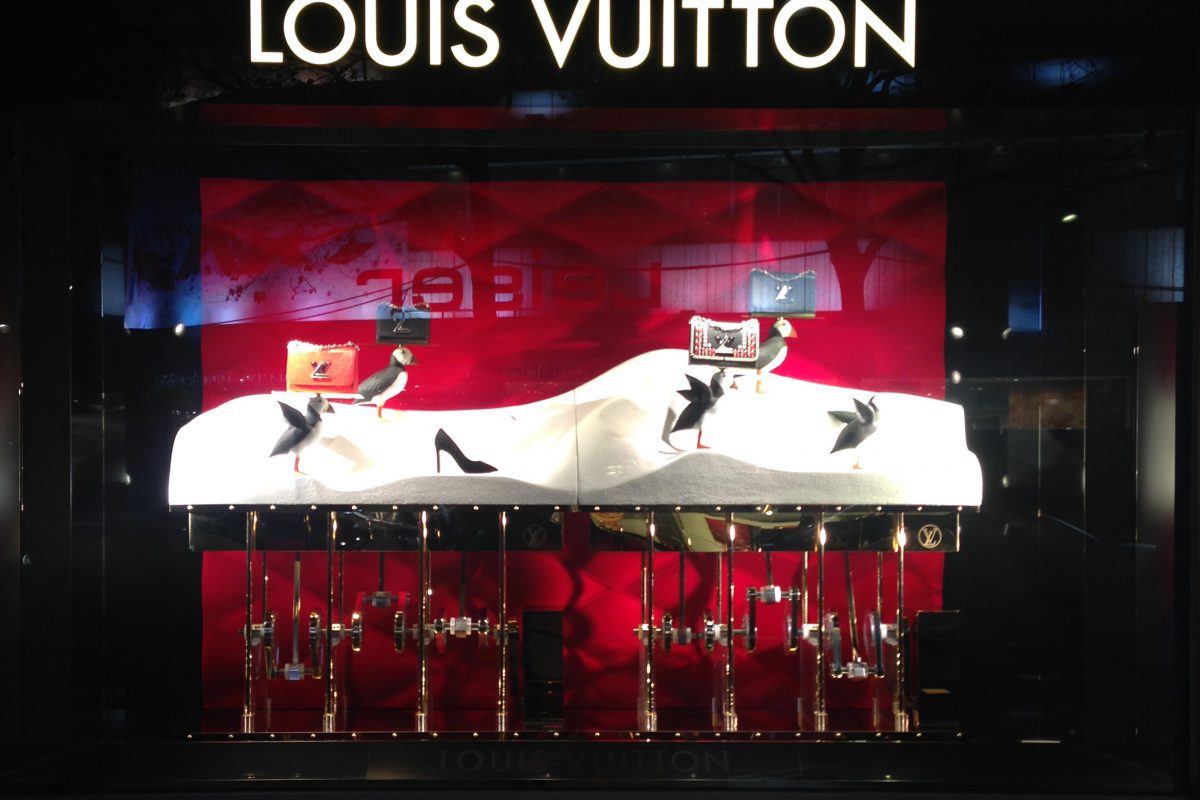
Keep up with our latest news and projects!

Retailers have exhibited their goods ever since they started to sell them, but they first utilized an artistic expression of storefronts when they were competing each other in 16th and 17th centuries. The density of stalls and stores in cities grew, and modest signboards were turned into complex, decorative metalwork signs, whose artistic level represented prestige of craftsmen and attracted customers. The invention of plate glass in the beginning of the 19th century along with new possibilities of creating wide windows brought artistry to another level. The size of display windows and their transparency allowed retailers to present their decorative installations to clients. The window dressing industry was established.
Back in 1929, during the Great Depression in the US, New York City retailers needed a new way to lure shoppers into their stores.1 Bonwitt Teller, a department store from Fifth Avenue, found a way to accomplish that. A surrealist, Salvador Dali was engaged in designing their display windows. Although his first art piece for Bonwitt Teller was not highly regarded by New York’s shoppers, it certainly drew the attention to the department store. The time of truly artistic display windows begun and over the next decades Bonwitt Teller hired more artists, including Jasper Johns and Robert Rauschenberg in 1955, and James Rosenquist in 1959, who was also working for other retailers at that time – Bloomingdale’s and Tiffany. In 1961 Bonwitt Teller was advertised with Andy Warhol’s paintings in the display windows.2
Until now, the display windows are designed most often by artists, or artistic souls, but it is not the retailer’s intention to dress the shop windows only to attract shoppers. Nowadays, during the era of the internet3 and the popularity of shopping malls, the role of the storefronts is not only to attract consumers. They need to provide a decent shopping experience and improve the public space. A recently coined term “window shopping”, which describes the activity of strolling along the storefronts and admiring goods, as well as the popularity of high retail streets confirm that we are attracted by nicely designed storefronts.
The influence of artistic display windows on the activities on streets, which are the most public spaces in cities, was noticed also by art institutions such as The Royal Institute of British Architects or Museum of Modern Art which frequently place art along the streets – in display windows, and change public spaces into exhibitions.
RIBA Regent Street Windows Project, an annual event known worldwide, puts London’s architects together with distinguished retailers from Regent Street to create spectacular display windows. Krzyk Mody4, a polish exhibition from 2012, organized by the Art Museum in Warsaw, was developed in a collaboration with artists and fashion designers to prove that shop window can be something more than just a commercial. The exhibitions combined of display windows designed by artists have drawn a lot of attention and have allowed people to see storefronts from a different perspective.
Active plinths create vibrant urban spaces, but artistic storefronts can enhance the experience of streets as well. Along with function storefronts can be furnished with an art, forming eye-catching elements of streets and highlighting filled windows. In 1960 Armand Pierre Fernandez, furnished the entire space of Galerie Iris Clert in Paris with trash found on the city’s streets, and some of the gallery’s belongings. The see-through storefront allowed public to see everything – a pile of Parisian trash as well as Picasso’s and Manzoni’s pictures.5 Not only the shop window, but the entire store became art.
Artistic displays and window-shoppers are associated with the high retail streets, where we can experience the luxury by looking at designed storefronts. Creative installations in shop windows are not exclusive for designers. Local stores, situated in traditional residential neighborhoods have, more often than not, genuine, artistic display windows which can captivate us. So why do we not fill the neglected streets with window-shoppers and transform them into a place one wants to go?
Art in display windows can be a temporary tool for vacancy management and an opportunity for improvement of a street. Displays created by native or international artists can turn the entire street into a local or global destinations and, regardless of the distinction of artists6, foster neighborhood’s development, attract new businesses and bring pedestrians to the area. Art can be a street catalyst as well as a neighborhood catalyst. Wynwood Walls is now one of the Miami’s trendiest neighborhoods filled with a work of world-renowned street artists. Murals applied on the windowless, empty walls transformed the neglected district into a thriving destination, and boosted shops along several mixed-use streets. That form of an art installation was uncharted before, but now it partakes in the success of Wynwood Walls and the entire district.
Should we, instead of letting people walking by an empty storefront, give them a pleasure of passing by an art piece? Three-dimensional art installations in a display window can be an artistic destination in any city and alter any street. Art has an enormous influence on people, it draws our attention and stimulate intensive emotions. Art piece located in any surrounding arouses our interest, even if there is nothing aesthetically pleasing about it. Art changes the space or our perception of it.

 Warsaw 2016
Warsaw 2016
 Berlin 2016
Berlin 2016